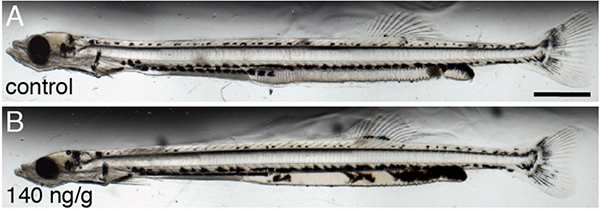New Publication About the Mechanisms of Oil-induced Cardiotoxicity in Fish
April 5, 2021 — Scientists from OR&R have been working with collaborators from the Northwest Fisheries Science Center and other research groups to improve our understanding of how exposure to oil during early development causes injury in fish.

A new publication examines the mechanisms behind developmental cardiotoxicity and delayed loss of fitness in Pacific herring that are exposed to low doses of oil during embryonic development. Oil exposure leads to specific phenotypic changes, driven by dysregulated intracellular calcium cycling, that are precursors to long-term cardiac injury and reduced fitness. The research also identified specific genes whose expression changes in response to oil exposure, causing the downstream effects. This advances our ability to use altered gene expression as a diagnostic biomarker of oil exposure and injury in fish. The study was recently published in Aquatic Toxicology.
